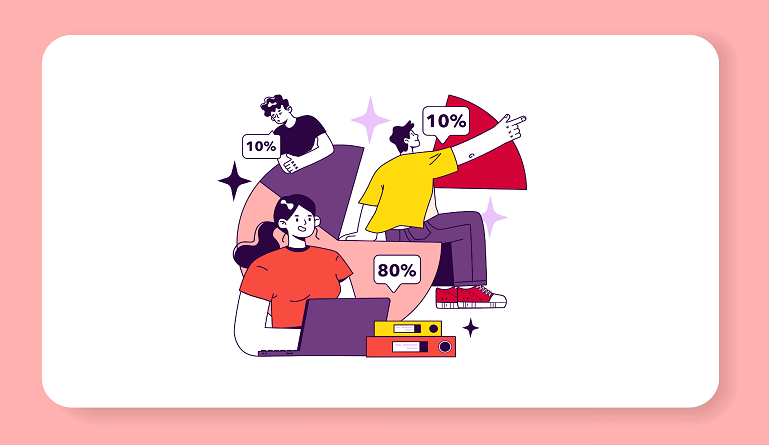World Health Day 2023 – focused on the theme “Health for all” – is a good time for employers and HR teams to turn the spotlight on employee health and well-being, an issue that’s become absolutely vital since the pandemic.
What is Employee Well-being?
Employee well-being encompasses the mental, physical, and emotional welfare of an employee as a whole. Typically, human resources will categorize employee well-being into four primary components: professional, social, mental, and financial. Wellness extends beyond physical health. It suggests that people are prospering holistically, working optimally, as well as realizing their abilities and aptitude in their personal and professional lives.
As caretakers of a company’s most valuable asset — its employees — HR should prioritize employee wellness. The health and well-being of employees have huge economic implications as well. Depression, anxiety, and other conditions are estimated by the World Health Organization to impact the global economy by $1 trillion per year in productivity loss.
Consequently, employee well-being is the cornerstone of high performance at work, a flourishing workforce, and a successful business, which makes it an important theme to discuss on World Health Day 2023.
How HR Technology Can Help Plan Your Wellbeing Strategy
HR teams can use technology across the five steps of planning a strategy for employee health and wellness:
- Finding the areas of concern: Among these are fatigue, a loss of purpose and motivation, and work-life imbalance. HR tech tools like pulse surveys can help identify these.
- Assessing the primary obstacles to health and well-being: Presumably, poor management, excessive workload, or conflicting workplace values might prevent people from reaching a state of happiness. Employee engagement studies are the tools that will help you gather this data.
- Evaluating the impacts: How would a lack of employee well-being impact profitability and productivity? You can turn to people analytics for insights and future projections.
- Developing a wellness program: What initiatives does your organization currently have in place to foster well-being, and how do they compare to external and internal benchmarks? For this, you need an HR management dashboard as well as external market intelligence.
- Implementing an individualized program: The wellness program must offer employees with applicable, personalized solutions that address their unique challenges and phases of life. The program could include, for instance, an Employee Assistance Program (EAP), mentoring and coaching opportunities, and opportunities for personal investment planning. Most modern benefits administration platforms can help you here.
The COVID-19 Effect
After the COVID-19 pandemic, the importance of having a healthy and satisfied workforce has assumed an entirely new dimension. For instance, the focus on mental health has increased significantly.
Since the beginning of the COVID-19 pandemic, approximately 42% of global employees have observed a decline in mental well-being. A mental health condition reveals itself in absenteeism, presenteeism, and decreased productivity in the workplace. Employees are under a great deal of tension due to working remotely, social alienation, and a hazy work-life balance.
This is why ISGlobal raises grave concerns about a never-before-seen global mental health crisis.
In a bid to promote employee well-being as well as prevent the increasing incidence of mental health problems at work, businesses have been exhorted to implement measures that utilize cutting-edge wellness technology solutions. In fact, the two are frequently intertwined; mental health problems can contribute to acute illnesses, like substance use disorders.
5 Technologies that Can Help Tackle Employee Wellbeing Challenges
Modern technological breakthroughs make it easier for HR teams to keep tabs on employee health and well-being, and push the needle in the right direction. Some of these tools are:
1. Internet of Things (IoT) in HR
Indicators of stress, like pulse rate and speaking volume, can alert HR teams to possibly problematic situations. With initial visibility into workplace challenges, HR leaders can provide solutions and assistance that are well-informed.
Workspaces, as well as open-plan offices, which are planned with effective and pleasant setups, provide additional opportunities for enhancing wellness and satisfaction. Utilizing biometric or sociometric sensors, HR teams can learn about the performance and reactions of their employees on the basis of one’s location and team memberships.
2. Self-service employee benefits
With the emergence of technology-enabled benefits, businesses can offer their employees more health-related incentives. In addition, they can collect data on how individuals are using these technologies to make healthier life choices.
For instance, empowering your employees by allowing them to choose among various healthcare plans is a great method to do so. Incentives such as gym memberships, healthful dietary choices, as well as discounts on exercise apparel can also be provided. And some employers have also resolved to provide their employees with access to health and fitness apps.
3. Agile leave and attendance management
Progressive companies are increasingly offering paid time off to their employees; for example, Netflix offers unlimited PTO as long as the work is completed.
Paid time off allows individuals to care for themselves or their families without fear of repercussions. Such policies can indeed be important for employees with physically challenging jobs or occupations that demand extended periods of separation from their families. Given our modern, fast-paced world, sabbatical leave requests are now becoming a major trend as well.
But to maintain this balance – i.e., ensure compliance with leave policies while giving employees time off for health reasons AND driving performance – requires a powerful leave and attendance management system, combined with next-gen performance management tools.
4. AI-based feedback collection and analysis
Form-based employee feedback gathering may be a tried-and-tested method for measuring workplace happiness and success. But the data offered by conventional collection methods are typically subjective, difficult to evaluate, and hard to track over time.
In comparison, AI-powered feedback platforms employ intelligent algorithms to transform subjective information into objective evidence that can be readily analyzed and monitored. Using AI technology, freeform text, as well as verbal replies provided by employees, can be transformed into quantitative data. This makes a massive difference when analyzing employee health and wellbeing data and genuinely acting on the insights.
Automatic data anonymization also motivates employees to provide more honest feedback. For instance, there may be an internal process that imposes an unnecessary time strain on employees and causes fatigue. Or, a lack of team bonding opportunities could be causing a sense of isolation, which, in extreme cases, manifests in the form of hikikomori (the Japanese term for social withdrawal).
According to a recent survey, approximately 20% of hikikomori cases in Japan are attributable to the strains of the Covid-19 pandemic. Using AI-based tools is vital for the early detection of such concerns.
5. Mobile tools for anytime-anywhere support
Assistance from mobile HR technologies is genuinely life-changing for people with long-term illnesses. HR departments can implement a tool that sends daily advice and reminders to employees with chronic medical conditions to help them remain on track.
The tool would also serve as a secure portal by which an employee with a current health insurance plan can interact directly with a healthcare professional. Further, employers are increasingly interested in mobile apps that promote the focused treatment of specific chronic conditions, like Type 1 and Type 2 diabetes or mental health conditions.
World Health Day Theme for 2023: “Health for All”
This year, the World Health Organization is turning its focus to the theme of “Health for all” – i.e., equity and universalization of healthcare. This principle also needs to be embedded in your approach to employee well-being.
HR teams should consider the unique requirements of BAME (Black, Asian, as well as minority ethnic) or LGBT+ employees when devising a well-being strategy; a one-size-fits-all approach may not be useful. For fear of discrimination, LGBT+ employees might not be as inclined to look for assistance, when facing mental health issues.
This requires recognizing the disparities your employees encounter in their daily lives and accommodating their specific requirements.
Purchasing an HR tech solution by itself might not be sufficient to implement the necessary adjustments. Employers must develop wellness strategies that extend into other areas, such as mindset, coaching, and employee compensation, to ensure that all employees have complete recourse to comparable health and wellness opportunities.
A greater emphasis on work-life integration is also essential, as it can level the playing field for employees by allowing them to better balance their personal obligations and health issues — and carry on with their work and lives — in a manner of their choosing.





